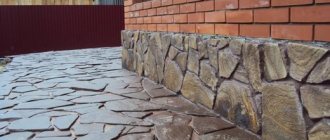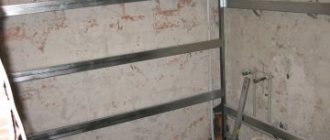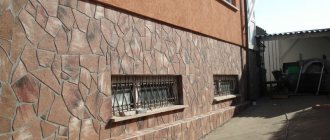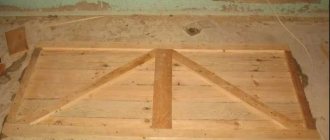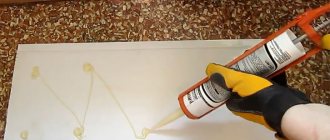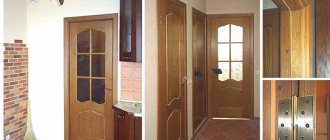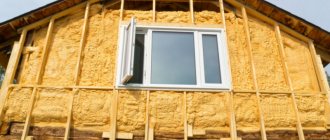Features of decorative stone
The main advantage of finishing stone is its versatility. It can be used in a variety of rooms: from the living room to the kitchen or balcony, where the style of stone finishing would be appropriate. This is not just an aesthetic, but also a practical solution. The stone serves as an excellent protection for corners from abrasion and damage. In addition, if you line the openings with stone, the room looks solid and status-worthy. Skillfully executed masonry can even change the configuration of a room.
Stone classification
Depending on the materials used in production, the following types of decorative stone are distinguished:
- Porcelain tiles. This material is based on clay, feldspar, inorganic additives and dyes. After mixing, all components are pressed and sometimes fired. The material is distinguished by an abundance of shades and textures. It is possible to realistically imitate ornamental stones. The material is resistant to temperature changes, but is not resistant to chemicals.
- Agglomerates. This is an artificial stone, which includes marble, granite chips, and various additives. The binder is a polymer compound. The material is quite durable and tolerates temperature changes well. However, it is not without its disadvantages. It is not resistant enough to chemically aggressive environments, UV radiation, and wears out quite quickly.
- Stone made of colored concrete. This is the most common material for wall cladding of all those listed. It consists of Portland cement, sand and various additives that determine color and other performance properties. The use of fiberglass mesh in the production brings the material closer in strength to its natural counterpart and even to metal.
Dimensions of open doorways
The interior style depends not only on the materials used to decorate the open doorway, but also on its shape and size. For example, a wide opening, almost the entire length of the wall, unites two rooms, creating the illusion of a free, light and airy space. At the same time, depending on the design of the opening, the combined space may look solid or have a conditional demarcation.
A rectangular opening up to the ceiling allows you to visually raise a low ceiling, stretching out the room. In addition, such a height of the opening draws attention to itself and sets a certain landmark for the interior.
A semicircular or domed arched opening softens the space, tuning it into relaxation and comfort. The Roman arch looks great both in the opening of a thin wall, and as a small vestibule or corridor with a ceiling that continues the contours of the passage. The semicircular shape of the arch of an opening without a door is considered the most popular among owners of apartments and houses.
A Thai arched opening, consisting of a right angle on one side and a circle on the other, allows you to create a unique interior. The large hall is interestingly played out by arranging two Thai openings, located at rectangular angles to each other and separated by a small partition. This design looks like a large semicircle divided in half.
An original, unique interior is created using a shaped open opening. Volumetric patterns and curls in the form of a frozen wave, asymmetry, contrasting finishing materials and the addition of lighting to the portal, shelves, niches or columns will become a stylish accent and reference point for the entire interior.
Properties of artificial stone
The secret to the success of decorative stone is its completely unique performance qualities. They apply to all types of finishing materials, regardless of composition:
- Easy to process even with the most common carpentry tools;
- Low porosity. Decorative stone is not hygroscopic and does not affect fluctuations in the humidity level in the room;
- Strength. Some varieties in this indicator are not inferior not only to natural stone, but also to metal;
- Resistant to dirt, extremely easy to maintain;
- Fire resistance. Most artificial stones are also fireproof;
- Aesthetics. In addition, decorative stone is pleasant to the touch. It is not cold, like natural stone, but warm;
- Durability. Theoretically, with proper care, it can serve its owners for many decades.
Choosing a mounting method
An important condition for filling openings with bricks is to ensure a reliable connection between the new structure and the old one.
There are two binding methods:
Scheme of ligation of sutures.
- ligation of sutures;
- anchoring
Bonding seams with an existing structure is used to seal brick walls. To do this, at the ends of the doorway it is necessary to knock out bricks to a width of at least 12 cm. Niches are formed into which new stones will fit when the opening is filled with bricks. If the partition is folded into half a brick, then it is enough to knock out the finishing halves in every fourth row.
The dressing method is not very suitable for sealing window openings, because they are made in a load-bearing wall, folded into 1.5-3 stones (thickness from 250 mm). Here it is more appropriate to perform anchoring: using a hammer drill, drill holes in the side ends of the structure and hammer pieces of periodic profile reinforcement into them.
The diameter of the connecting reinforcement is from 6 to 10 mm, the depth of immersion into the thickness of the structure is at least 100 mm. Anchoring is performed every 3-4 rows; it is most convenient to do it during the construction of the partition so that the seams of the new and old masonry coincide. This method is also used for connection with concrete walls.
Advantages of finishing
Natural stone is very beautiful and luxurious. However, recently many people prefer a man-made analogue. The reason is that natural stone is too expensive and heavy. The advantages of this material are as follows:
Light weight compared to natural material. This significantly reduces the cost of work, since there is no need to worry about additional strengthening of the foundation:
- Durability. In this respect, composite materials are not inferior to natural ones;
- Variety of shades, configurations and textures. Imitation of granite, shell rock or marble is possible, and very realistic;
- Easy to install. The back side of the artificial stone tiles is completely smooth. This is how the man-made version compares favorably with the natural one;
- Versatility. The decor can be mounted on walls made of wood, brick or concrete;
- Fire resistance. Thanks to this, fireplaces are decorated with artificial stone;
- Hydrophobicity. This allows the material to be used for decorating walls in swimming pools and bathrooms. In addition, surfaces lined with decorative stone are unattractive to fungi and molds;
- Resistance to temperature changes and solar radiation;
- Good compatibility with other materials. These are plaster, wood and forged elements;
- Easy to care for (a soft cloth and a detergent solution without abrasive elements is enough).
Stone is also suitable as an accent of interior elements (arch, column, fireplace, niche, separate “accent” wall. However, laying all the walls completely with stone is, to put it mildly, not the best idea. The result will be some kind of ancient knight’s castle, and not a stylish modern one room.
Rules for choosing a stone
There are several criteria by which decorative stone is chosen:
- Square footage of the room, ceiling height;
- Room configuration (shape, number of turns and openings);
- Type of lighting;
- The style in which the interior is designed;
- Tint palette;
- Functional purpose of the room (living room, hallway, bathroom).
Taking into account these criteria is mandatory. If you ignore them, the resulting resource will disappoint you, to put it mildly. As for the performance qualities of the material, the selection criteria are as follows:
- Inspect the material. Playing shades, colored specks, contrasting areas will look beautiful when decorating the opening;
- Growths or holes on the back side are unacceptable, as it will be impossible to glue the material to the wall;
- It is advisable to buy stones with a water-repellent coating. This significantly reduces the time spent on finishing (no additional treatment with a hydrophobic compound is required).
Stylistic finishing techniques
Laying decorative stone can be done in a variety of ways. For example, in a large apartment, an imitation of the entrance to a knight’s castle, made of massive stones with uneven relief, will look beautiful. If you support this decision with pieces of antique furniture and paintings on a knightly theme, an antique door - a striking effect is guaranteed. When decorating doorways, imitation brickwork is often used. The “ragged” edges are especially impressive. Tiles with a smooth transition from one color to another or, conversely, scattered, chaotic, without selection, look very original. These options are suitable for rectangular and arched openings.
The “primitive” option is also original: to cover the entrance to create an imitation of a manhole into a wild cave. If this option is skillfully played, it looks flawless. Decorative stone imitating pebbles or sandstone also fits well into the design. This is a good solution for ethnic and eco-styles with rattan furniture, exotic plants and natural materials in the interior.
Cladding options inside and outside, photo
Before cladding the doors, it is necessary to carefully prepare the surfaces: remove the old cladding, level and prime the walls. The trim is removed from the doors and the baseboards are dismantled. Markings are made on the wall for the ornament that will be laid out.
After the primer has completely dried, the surfaces are treated with concrete contact, which increases the adhesion of the tiles to the wall . The stone is laid out on a flat surface to make it more convenient to select its color and texture when laying. The laying of the slope begins from the bottom corner, just below the plinth. The fragment is smeared with glue on the reverse side and attached to the wall.
If the tiles are laid vertically to the door slope, each element is placed close to the casing. At the final stage of finishing, a special spray composition is applied to each element. It includes tinting paste and acrylic varnish. This will give the finish a natural look. The final touch is the installation of platbands and baseboards. Just keep in mind: artificial stone does not fit well with platbands made of MDF or other synthetic materials.
Advice
The broken edges of the fragments are processed with a grinding machine so that there are no sharp corners.
Different masonry methods are used for finishing. Most often, imitation brickwork is used when finishing around doors. Its edges do not align with their ends facing each other, but create a torn effect.
Look at the photo, how interesting the imitation of a cave entrance made of massive tiles looks. Pebbles or sandstone are suitable.
Types of stylistic design:
- Matte shades are suitable for modern interiors. If there is little natural light in the room, you need a stone with a glossy surface. The main color scheme in such interiors is boring – black and white.
- For classics, even, smooth and uniform plates are selected. Common colors are orange, beige, cream.
- High-tech implies contrast of colors. The dark masonry looks original against the background of white walls.
- Eco-style involves the use of white material.
- For the rustic direction, the best choice would be an imitation of orange brick, standard or even in shape.
- For loft, use gypsum material in blue or white shades.
DIY finishing
Decorative stone is combined with other types of materials. This determines its use in finishing door openings and slopes. Let's look at how you can do the finishing work yourself.
The surface on which the finishing material will be laid must be impeccably flat. If you neglect this, the finish will be neither durable nor beautiful. There are 2 options for leveling the surface: plaster or drywall.
Required materials and tools
When leveling the surface with your own hands using plaster, you will need:
- Starting and finishing lineups;
- Spatulas of different sizes;
- Sandpaper;
- Construction level – to control the quality of the process.
When pre-finishing walls with plasterboard, use:
- Metal profiles, self-tapping screws;
- Screwdriver (for fastening frame elements);
- Dowels (for securing the frame to the surface).
Directly for finishing work you will need:
- Stone for facing;
- Special composition for fastening;
- Wire reinforcement;
- Construction mesh;
- Putty knife;
- Level.
Surface preparation
In order to properly finish the door slope, its condition is assessed in advance. If irregularities are identified, apply a starting layer of plaster. Ready-made mixtures are available for sale, which simply need to be diluted with water according to the instructions. The rules for preparing the surface for finishing are as follows:
- The starting composition is applied in several thin layers. Before using the next portion of the composition, wait until the existing layer hardens;
- After drying, each layer is treated with sandpaper. This manipulation is necessary to remove all irregularities formed during the application of the starting mixture;
- Material consumption largely depends on the initial unevenness of the slope;
- After the starting coat has been applied, it's time to start finishing. It, like the starting one, is mounted in several layers. After hardening, each layer is treated with sandpaper.
When finishing a doorway, you need to think about what types of materials you are going to use. Natural and artificial stone go well with decorative plaster.
The main point is the correct selection of colors. In this case, the finish will look natural and noble.
Features of leveling walls with plasterboard
Many people prefer this method. Its main advantage is that the surface is perfectly smooth with minimal effort. In addition, at the end of the work there is no construction waste left, which is generated in excess during plastering work. Layers of plaster and cardboard are easy to cut and do not crumble. The alignment process is as follows:
- Drywall is attached to a metal profile frame. You can buy it at a building materials store. The result is a good sheathing that can support the weight of the wall covering. Installing the frame is not at all difficult;
- You need to know that drywall “eats” part of the space due to the metal structure. The distance from the wall to the frame ranges between 5 and 10 cm (it all depends on what unevenness there is on the surface);
- It is advisable to use drywall if other surfaces in the apartment are finished using this method.
Work algorithm
The facing stone is attached to cement mortar or adhesive (sold in hardware stores). The procedure is as follows:
- Wire reinforcement is fixed to the prepared surface using cement mortar. Next, apply a layer of plaster;
- The next stage is the installation of the construction mesh. It is needed to strengthen the finish on the wall;
- The wall is lined with stone.
Sometimes PVA glue is added to the cement mortar. The mixture becomes much stronger.
There are 2 types of decorating doorways and window slopes with stone: suture and seamless. The first method involves applying an adhesive solution directly to the wall. With the seamless method, an adhesive composition is applied to the surface of the stone. The finished finishing material is made in such a way that no adjustment is required. Upon completion of installation, the surface is treated with an impregnating compound, which gives the finish additional water resistance.
The procedure for designing the opening
Decorating the slopes of the front door with decorative stone is done using the same technique as the interior door. The only difference is in the choice of material - not every imitation is suitable for these purposes.
Preparing the base
- The excess is removed - old paint, plaster, and in some cases the door is also dismantled if an arched opening is planned. The task is to achieve a flat and durable surface on which the tiles will adhere securely.
- Marking the wall according to the diagram for fastening the stones.
- Applying notches (grooves) to the base. This increases its adhesion to the cladding.
- Treat all segments to be finished with a primer. The goal is the same; Plus, this composition prevents the absorption of moisture by the wall material.
- After drying, it is advisable to apply concrete contact to the base. This product will further increase the level of adhesion, which means that the fixation of the stone will be as reliable as possible.
Door jamb trim
- The tiles are laid out on the floor according to the diagram. This will make further installation easier and will allow you to once again evaluate the correctness of the choice of location of the fragments.
- Removing the baseboard. The stone is laid to the floor, and therefore the lower molding will be a hindrance; Upon completion of the work, it is easy to return it to its place.
- Determination of the horizon line. Task: to ensure that all seams are located in this plane. Using a level and a long strip, a line is drawn on the wall that corresponds to the lower cut of the stones of the first row.
- Fastening the tiles. Cladding work always starts from the corner. To fix the samples, adhesives recommended by the manufacturer are used (tile, “liquid nails”).
The nuances of the work depend on the design intent. During the finishing process, stones will have to be cut, edges polished, and bevels made; but these are details that are not of fundamental importance. If platbands are installed later, then indentations are made for them.
- Finishing the joint
To make the stone more natural, it is advisable to spray the prepared composition over the entire area of the cladding, as well as adjacent areas of the wall: acrylic varnish + tinting paste. The mixture is diluted with water to the desired consistency and applied to the surface. It is not difficult to choose a recipe.
Decorating a jamb with decorative artificial stone does not require professional training. But if this option is unacceptable for some reason, you can use materials that successfully imitate such a finish. There is a large assortment of polymer texture panels on the market, special wallpaper of the appropriate texture; working with them is much easier, as well as updating (reinstalling) damaged samples. But still, they are not able to completely replace decorative tiles. This design solution can be considered the most preferable.
Design tips
To make the decoration of a door or window opening look like a real decoration of the interior, you need to listen to the advice from professional designers:
- The lining of the opening is carried out evenly over the entire height. It is permissible to make the trim more massive at the bottom, but not at the top of the door;
- The most difficult thing is to design an arched opening for an entrance or interior door. When facing, it is necessary to monitor the combination and symmetry of the material pattern. Working with a rectangular opening is much easier. If necessary, you can use a grinder to give the stone the desired shape;
- Decorative stone looks great with wood. It's good if they are finished in the same style. For example, a smooth stone is suitable for walls lined with polished panels, and a rough stone is suitable for rough-hewn wooden surfaces. It can also be combined with plain textured wallpaper;
- The seam between the tiles can reach 8 mm. To obtain even seams, special plastic crosses are used;
- The work will look complete if you fill the space between the elements with a special jointing solution. The solution is prepared in accordance with the instructions printed on the package. You can change the color of the solution using tints;
- The use of decorative stones in interior design requires thoughtful lighting. In this case, you can show the tints in all their beauty. If you place sources of additional lighting on the walls, it turns out especially beautiful. If it is not possible to install sources of additional lighting, it is better to choose a finish in lighter colors;
- The stone surface goes well with plants, especially climbing species. For example, you can decorate an arch with vines.
Finishing a window opening with artificial stone
Decorating windows with stone looks no less impressive than decorating doorways. An important condition is the size of the elements. It is necessary to trim the window slope with a small facing stone so that the finished window opening does not look massive.
It is recommended to use small products for window cladding
Window slopes must be leveled and primed outside and inside. When using artificial material, reinforcing the surface of the slope, even if it is made of plasterboard, using reinforced mesh is not required.
The material is laid on the windows using the monolithic method, starting from the bottom of the slope. When the lower fragments are securely fixed, you can continue laying out the upper rows. Corners should be formed by trimming the end sides of the facing products at an angle of 45 degrees.
Specifics of the material
Finishing doorways with decorative stone is possible due to its unique technical and operational characteristics.
Advice! Decorative stone is suitable for cladding kitchens, bedrooms, balconies, and corridors.
If you decorate doorways with decorative stone, you can create a comfortable and cozy atmosphere inside the room.
In addition to protecting corners from mechanical deformation, you can also use this decorative material to give a beautiful appearance to any living space.
Modern manufacturers of finishing materials offer consumers a variety of colors and textures of decorative bricks, so even the most capricious buyers will be able to make their choice.
When choosing decorative stone as a finishing material, you can not only visually expand the size of the doorway, but also give the interior of the room restraint and seriousness.
Finishing doorways with decorative stone, photos, useful tips, all this can be found in the proposed video
Advice! This finishing material goes well with Roman and Greek wall paintings.
For example, with the help of large mirrors and the correct selection of brick colors, you can achieve an unusual visual effect and make the room longer.
High-quality finishing of doors with such bricks; photographs of the completed work can be found on the websites of design agencies.
Thanks to the use of mirrors and the original decoration of doors with this decorative material, you can get an unusual visual effect and lengthen a narrow room.
Using artificial material, you can create the feeling that you are in an ancient building from Stalin times.
Decorative bricks, used in decorating hallways, can be combined with other types of decoration.
For example, armed with this finishing material, it is quite possible to create a wall picture on the wall.
Advice! If you want to bring unusual elements into the room, it is quite possible to create an arch from decorative bricks.
They will help you recreate the atmosphere of the eighteenth century in the room, making the interior serious and strict.
Interior specialists use this finishing material in cases where they need to separate one room from another.
Thanks to decorative stone, you can create unusual slopes in the doorway.
Bricks of different colors help to create unique compositions that will harmoniously complement all other elements of the created interior.
Decorative brick is used not only in living rooms, hallways, but also in other rooms.
Attention! Classic brick is suitable for creating a discreet, attractive, serious interior.
In residential areas, this material is not only a high-quality finishing material for a long period of time, but is also considered an excellent design method in the world of modern design.
Photos of the most interesting ideas and technology for finishing doorways with decorative stone
Hello, our dear readers. We are glad that you continue to visit our blog in search of interesting construction ideas, and therefore we are not going to disappoint you in the future. So today, after consulting, we decided to tell, and most importantly, show how doorways are decorated with decorative stone. The photos, like the text, promise to be educational, so read on!
Material classification
In order for your idea to become a reality, you first need to think about choosing the source materials for the work. Currently, there is a division of this finishing material into two large groups: artificial and natural stone.
Advice! Professionals advise choosing a natural material for residential premises, while an artificial analogue is suitable for corridors and bathrooms.
Among the main distinctive characteristics of natural material, which made it an attractive way to decorate premises, mention should be made of its environmental friendliness, durability, and aesthetics.
Among the main and few disadvantages inherent in decorative bricks, we would like to mention its high cost.
Artificial stone is practically not inferior to its natural counterpart in terms of performance characteristics, as its manufacturers use innovative technologies.
Not all owners of square meters can afford such luxury as finishing doorways with natural stone.
Advice! Among the most inexpensive options for natural stone that are suitable for decorating doorways are marble, onyx, and sandstone.
Available materials used for finishing include numerous artificial stones, which are similar in appearance to natural stone.
Finishing features
Among the main elements for decorating which artificial stone is used, professionals highlight the front door. Finishing is carried out not only for the exterior, but also for slopes located indoors.
In the case of facade work, the finishing is carried out in conjunction with the cladding of the base. For example, you can choose sandstone to decorate a building.
Having selected stones of approximately the same size and shape, it is advisable to check them for layering. To do this, the stones are laid out on a flat and clean area and washed with a stream of clean water. It is advisable to wait until the stones have completely dried and only then begin finishing work.
Advice! In order not to waste time, you can start preparing the base itself while the stones are drying.
First you need to evaluate the quality of the surface that you plan to decorate. If necessary, it must first be primed so that no problems arise during the process of fixing artificial or natural stone.
Next, you need to prepare the glue to fix the prepared decorative material. Professionals advise beginners not to experiment, especially if they intend to fix the finishing material, but to purchase ready-made glue.
In this case, you can not only significantly save material resources, given the high cost of natural stone, but also save yourself from using low-quality adhesive.
Property owners who already have some experience working with stone try to choose CM 11 mixture as an adhesive for finishing work. What is the reason for this choice? This composition is not only suitable for interior and exterior work, but is also absolutely safe for human health.
In addition to this mixture, the manufacturer of which is a German company, you can also choose mixtures offered by domestic manufacturers for decorating internal and external doorways with natural and artificial stone.
Useful tips
Professionals recommend that owners of urban and suburban real estate who decide to use stone to decorate their homes first choose the color scheme of the finishing material. In addition, it is advisable to think over the version of the drawing that will be created after all finishing work is completed.
For example, you can initially outline the contours of the outline, which will be made of stone, and only after that begin direct repair work.
Types of decorative stone
- decorative brick
Brick in a natural shade is a popular material in loft-style interiors. Brick-like tiles imitate brickwork. A brick arch looks good in combination with dark-colored ceiling beams in a country-style interior.
White brick will make the room more romantic and light. Suitable for interiors in Scandinavian, Mediterranean and vintage style and of course in Provence style.
- shell rock, sandstone
Cladding tiles made of shell rock will fill the interior with light and warmth. The warm colors and porous surface go well with columns in antique-style interiors.
- limestone
Limestone tiles or its imitation are distinguished by texture and a variety of shades: from white to brown.
- river stone
This cladding looks very brutal, reminiscent of a medieval castle or the entrance to a cave. A large stone is suitable for interiors in the chalet style and in the Gothic style.
Decorating an opening with stone has a number of advantages. Firstly, it protects the side surfaces and outer corners from abrasion and contamination. Secondly, this finish is more durable.
Thirdly, an opening or arch takes on an interesting appearance and can become an accent in the interior or emphasize its overall style.
Finishing the doorway with artificial stone will help visually unite the hallway with the living space; it looks great in combination with decorative plaster or smoothly painted walls.
Decorating openings, arches and walls with natural or artificial stone provides ample opportunities for the flight of design ideas in interior design. The light pastel colors of the stone harmonize with various frescoes.
A long corridor can be visually “broken” into sectors using arches lined with stone, and “expanded” by decorating the walls with mirrors.
Carrying out decorative stone finishing work
Artificial analogues of decorative stone attract buyers with their affordable prices, and in appearance they hardly differ from natural materials. You can also save money if you carry out cladding work without involving specialists.
For a plasterboard arch, it is necessary to select lightweight material, and narrow tiles are easier to lay on the arched (vaulted) surface of the opening.
The composition of the adhesive solution directly depends on the material chosen for finishing. The glue must be mixed according to the instructions on the package. Use a special mixer to knead so that the structure of the solution is homogeneous and plastic.
The surface of the walls must be clean and treated with a primer. For better adhesion to the glue, some experts recommend making notches on the wall.
The glue is evenly applied with a spatula both on the wall at the place of gluing and on the back side of the tile. The layer thickness should not exceed 5-10 mm.
Place the tile against the wall, press it down and compact it using a rubber mallet, tapping the surface. Carefully remove excess glue around the edges with a spatula. The drying time for the glue is about a day or two.
Decorative facing stone can be laid in two ways: with jointing and without it. When laying tiles with jointing, use plastic crosses or wooden wedges of the required thickness.
Grouting of joints is usually done with a solution using a special syringe. After some time (20-30 minutes), after the mortar has set, the seams are smoothed with a jointing spatula.
At the end of the masonry, after the grout has dried, it is recommended to clean the artificial stone from dust and cover it with a transparent water-based acrylic varnish, for less abrasion of the surface during operation.
If the sequence of work is followed, finishing arches and openings, as well as decorating walls, can be done by any person who has the desire and at least some skills in repairs. Without hiring builders, you can transform your home in a short time by decorating it with stone.
Video on the topic:
Decorating the front door with decorative stone
The front door area is the calling card of the entire house and its beautiful design plays an important role. The construction market offers a huge number of ideas for decorating doorways. One of the most popular methods is finishing the front door with decorative stone.
Why should you choose decorative stone?
In other countries, such finishing can most often be seen on the outside; in our country, finishing the front door with decorative stone is usually done in an apartment or house
Decorative stone is an artificial analogue of a natural material.
Its great demand in the market is due to a number of significant advantages:
- light weight;
- durability of use;
- strength;
- resistance to high and low temperatures;
- resistance to high humidity;
- ease of care;
- environmental friendliness of the material;
- simplicity of installation and restoration technology;
- aesthetic appearance;
- a wide selection of different shades and textures.
It is worth noting that this material is moisture resistant, which is very important. Since, in cold weather, the slope from the inside releases strong condensation.
How to choose the right decorative stone for cladding
The positive properties of such material appear only in high-quality products.
To make the right choice, you should adhere to several rules:
- It is better to buy a stone that is more similar to natural material. It will be better if the palette consists of only a few shades.
- Pay attention to the outside of the product. The presence of chips, cracks, voids and stains from dye is possible, but damage of more than 5 mm is not allowed.
- The reverse side should be rough to the touch and have grooves, or the adhesive for gluing the material should have increased adhesion. This is important for strong adhesion to the surface.
- The structure of the stone must be uniform and dense. The presence of large particles in the material significantly reduces the strength.
- You should not purchase products that require additional treatment with protective agents (such materials include all natural stones).
Features of laying decorative stone
Special elements of the corner decoration of doors with decorative stone, photos of which you see, can be found in many shopping centers selling decorative stone
Decorating the front door with decorative stone is reminiscent of the process of working with simple ceramic tiles. The main difference is in the fastening options; you can use glue, sealant or liquid nails. In addition, the surface for cladding does not require careful leveling and processing. This greatly simplifies the whole process and makes it possible for even a beginner to do the job efficiently.Before decorating the front door with decorative stone, a photo of such an example is in front of you, mark the locations of the terminals for the switches and intercom. If this is not provided for, then knocking out a place in the stone will be problematic, although it is possible. Keep in mind that such forgetfulness can result in the entire apartment becoming dusty, because without dust it is impossible to do such work
| When decorating a door, you need to take into account several nuances. For example, for the harmony of the whole work, the lower part of the cladding should be made somewhat more massive than the upper. Sharp color transitions should be avoided and the stone layout should be symmetrical. To begin with, it is worth laying out the intended drawing on a horizontal surface. This will help identify all the flaws and create the perfect picture. |
It is worth noting that the decorative version with uneven edges looks more natural and original.
On a note! Finishing can be done both inside and outside the house, provided that the stone is water and frost-resistant.
Main stages of work
Self-finishing doors with decorative stone involves several stages of cladding. First you need to do the preparatory work. They include the preparation of the necessary tools, material and surface treatment. To work, you will need materials such as a primer, acrylic varnish and tinting paste. The tools needed are a spatula, a stiff brush, brushes or rollers, a sprayer, a building level, a plumb line and a file.
The working surface is cleaned of the old coating, then rubbed and puttied in uneven places. It will be more effective to prime the surface and apply a layer of concrete contact (special construction chemicals to prepare the surface for laying materials). This will significantly increase the adhesion of the surface to the material and extend its service life. The material itself is laid out in a pattern on a horizontal surface. At this stage, you need to select the appropriate shades and size of the tiles.
Please note that finishing the slopes of the front door with decorative stone is similar to the work for the outer part of the doorway.
The installation process itself can be divided into several working stages:
- Glue is applied to the work surface or material. The slabs are applied to the surface, starting only from the bottom corner. Using a level and slope, the evenness of the masonry is controlled.
- The corners are laid end to end. Or stone fragments are cut at 45 degrees.
- After covering the entire surface, you need to wait until the glue has completely dried and remove the excess with a stiff brush.
- For a more aesthetic appearance, the stones are coated with a special composition. Which consists of coloring paste, acrylic varnish, water and is applied using a sprayer.
- The last to be installed are baseboards and trim.
Note! Such material should not be glued to wallpaper, as it will quickly begin to fall off. If you are renovating the entire room, then the stones are laid first. Or the required area is simply cleared of wallpaper.
The entire installation process can be done even by a novice master. To understand all the nuances more specifically, just watch a video of the work process.
Decorative stone finishing methods
There are two ways to decorate the front door with decorative stone: suture and seamless.
The thicker or more brutal the stone, the larger the seam when finishing the slopes of the front door with decorative stone, photo example before your eyes
The first method involves cladding with gaps from 3 to 8 mm. Such seams are made smooth and at the end of the work they are filled with a special sealant. Fill the seams using a simple bag with a cut corner. The grout can be selected to match the color of the material or a contrasting option. Depending on your choice, you may get different end results. For example, play on contrast and add brightness and solemnity to the decoration.Please note that a stone with a structured surface must be cleaned of grout very quickly; if this is not done, then wiping it off from the depressions and grooves of the stone will be problematic
Monolithic finishing of door slopes with decorative stone provides a complete interior solution, as in this photo
The seamless method requires a more careful approach. To work, it is necessary to install a limiting profile and lay the material without gaps. The result of this method should be a monolithic surface. Glue for this method is applied exclusively to the tiles.It is important! Excess glue in this method should be removed immediately and not allowed to dry out.
